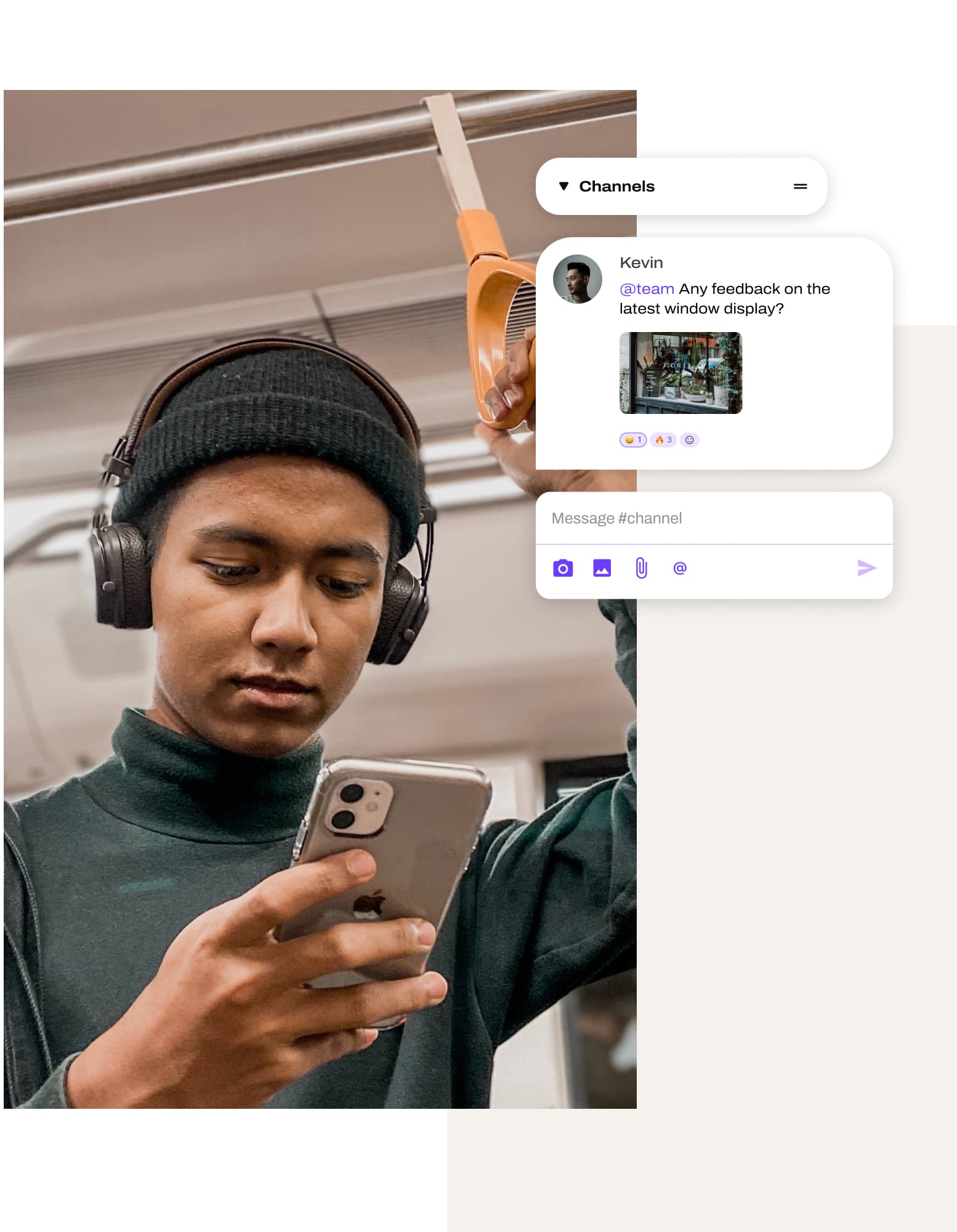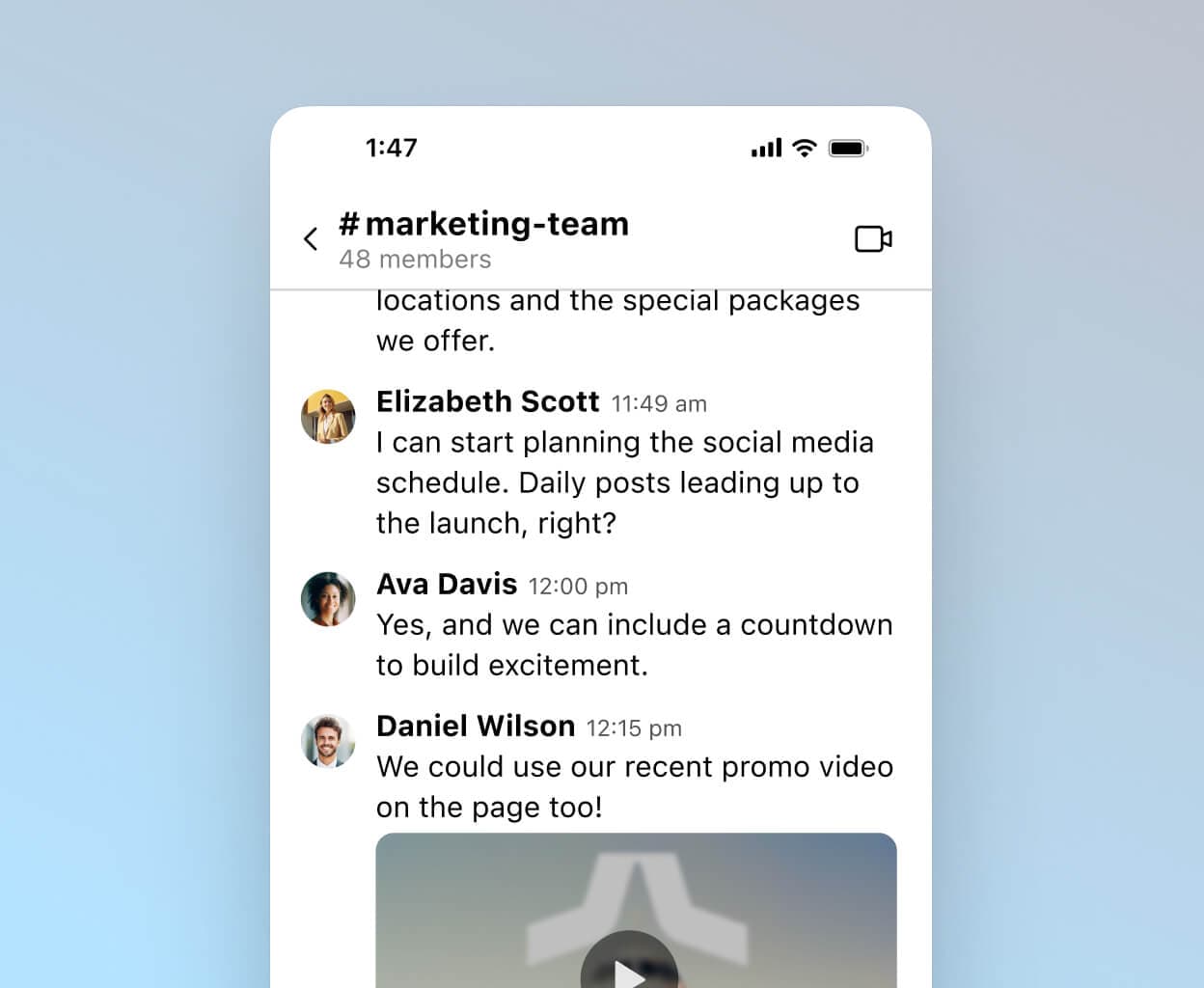SMS vs MMS
What’s the difference between SMS and MMS messaging? Both are just forms of text messaging, right? Well, sort of. Learn more about how they’re different below. Or, see how Dialpad's AI-powered collaboration platform works with an interactive product tour!

What is SMS?
SMS stands for “short messaging service,” and is a text messaging service. You’re probably no stranger to it if you’ve ever sent text messages to your friends or coworkers.
Most people use their mobile phones to send SMS texts, but it actually works across computers and mobile devices (like tablets). All you really need is a Wi-Fi or cellular network.
📱 Fun fact:
If you’re sending iMessages on an iPhone, that’s not a text message. Unlike SMS texts, it requires you to be on Wi-Fi or some kind of internet connection. Also, Android users can’t receive iMessages (they’ll receive them as text messages) because they’re not using an Apple device.
What is MMS?
MMS stands for “multimedia messaging service,” and is a type of texting technology like SMS messaging. You can probably tell from the acronym that the difference is MMS messaging lets you include multimedia content, like graphics, GIFs, and rich media. SMS messages are text-only—you can use emoji, but otherwise, an SMS message only includes text.
MMS messages are similar to SMS messages, but they can include multimedia content such as images, video, and audio.
In Dialpad’s platform, you get business text messaging functionality right in the desktop or mobile app—which also lets you make phone calls and have virtual meetings:

MMS vs SMS: What are the differences?
MMS and SMS text messaging are quite similar, and you’ll often see them referred to together, but there are some key differences between the two.
Character limits
A single SMS text message can be no longer than 160 characters.
MMS messages can be much longer than SMS messages, with a maximum length of 1,600 characters. This means a single MMS message is able to hold much more information than an SMS message.
Deliverability
If you’re planning a text marketing campaign, in terms of deliverability MMS messages need cellular data to be delivered, are more likely to be blocked by carriers than SMS messages because MMS messages are often larger in size, and carriers may have limits on the size of messages that can be delivered. So, you may want to double check the details before you dive headfirst into an MMS marketing campaign.
Costs
MMS messages require a data connection, so they may incur data charges. And because MMS messages are often larger in size, and carriers may charge more for messages that are over a certain size, MMS messages typically cost more to send than SMS messages.
Supported content
Compared to plain-text SMS messages, MMS supports a wider range of content types than SMS, including images, videos, and audio files.
Should I use SMS messaging or MMS?
So, when should you use SMS vs MMS? Well, it depends on your mobile marketing strategy and use case.
📱 A quick note on other types of messaging:
If you’re trying to reach customers or prospects on their mobile devices, you might also consider other messaging apps or communication channels like WhatsApp and Facebook Messenger. These will require Wi-Fi or cellular data, but they may be more popular with consumers depending on demographics and where they’re based.
When to use SMS messaging
In most cases, SMS marketing is great for short, timely communications with existing customers or clients like notifications, appointment reminders, order confirmations, and one-time passwords (OTPs). When you’re sending SMS text messages to existing customers, you’re also likely to see higher open rates because they know who you are and expect to hear from you.
If you don’t want to be restrained by cellular data requirements, SMS messaging would also be a better fit.
When to use MMS messaging
MMS comes in handy when you need to exceed the 160-character limit and/or include multimedia content in your messages, such as pictures, videos, or audio files. The best MMS use cases are for visual messages, like holiday cards or sending a coupon in the form of a QR code, for example.
SMS and MMS: Which is more beneficial for your business communications?
In conclusion, SMS and MMS messaging are both forms of instant messaging for business. SMS is the more basic option, while MMS offers more features but tends to be more expensive.
If you want to reach an audience that’s on their cell phones all the time, either option might come in handy. When you’re deciding which option to use, consider the character limit, deliverability, cost, and supported content.
If you’re looking for the best business texting service and want something that’s integrated into a larger communications platform, learn more about Dialpad’s AI-powered collaboration platform!
At just $15 per user per month, it gives you an advanced solution that lets you make phone calls, have video meetings, and send SMS/MMS messages, all from a beautifully designed desktop or mobile app.
See how easy Dialpad is to use
Sign up for a free trial to take it for a spin—it takes just a few minutes, and you'll be set up with a virtual phone number too. Or, take a self-guided interactive tour of the app!
